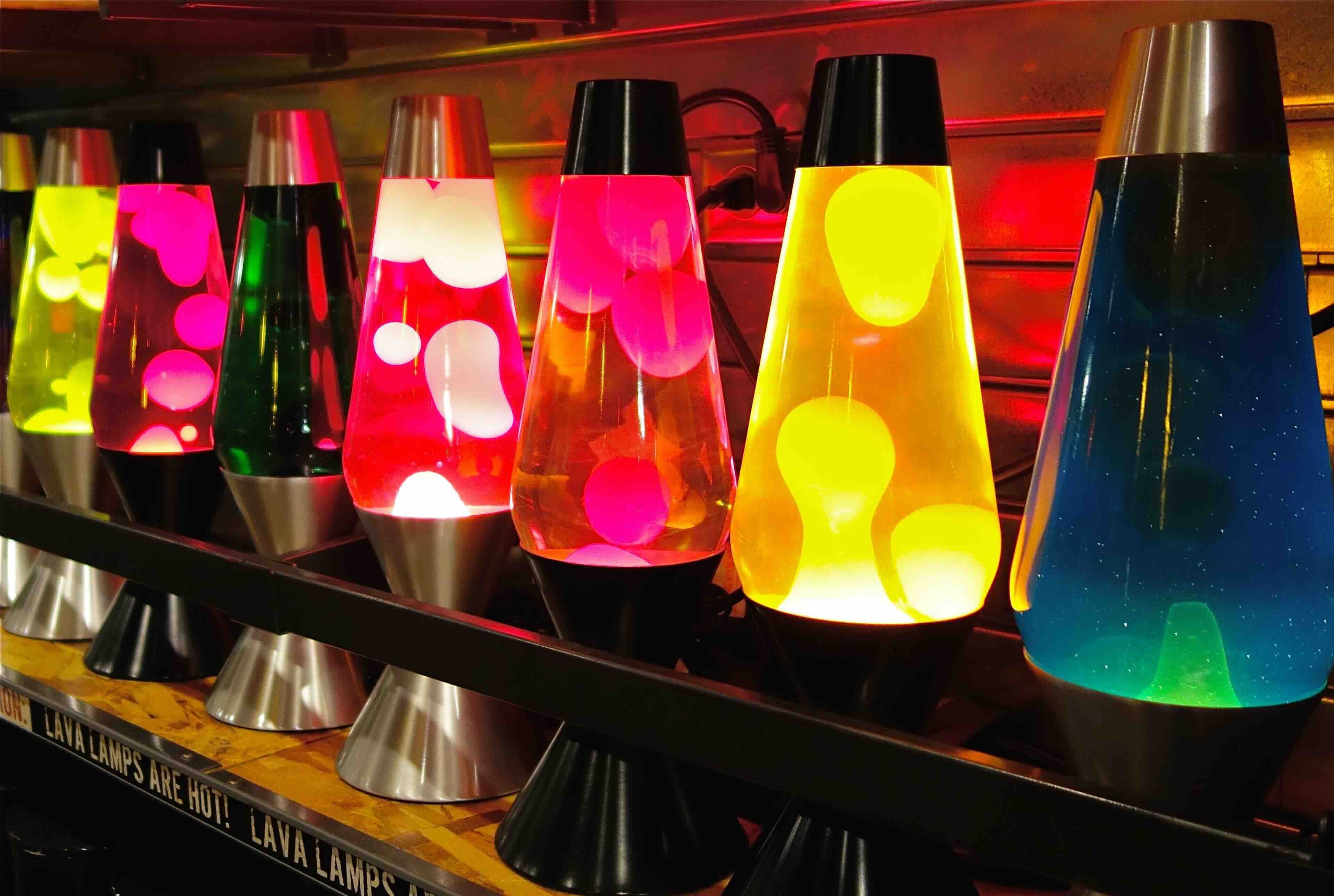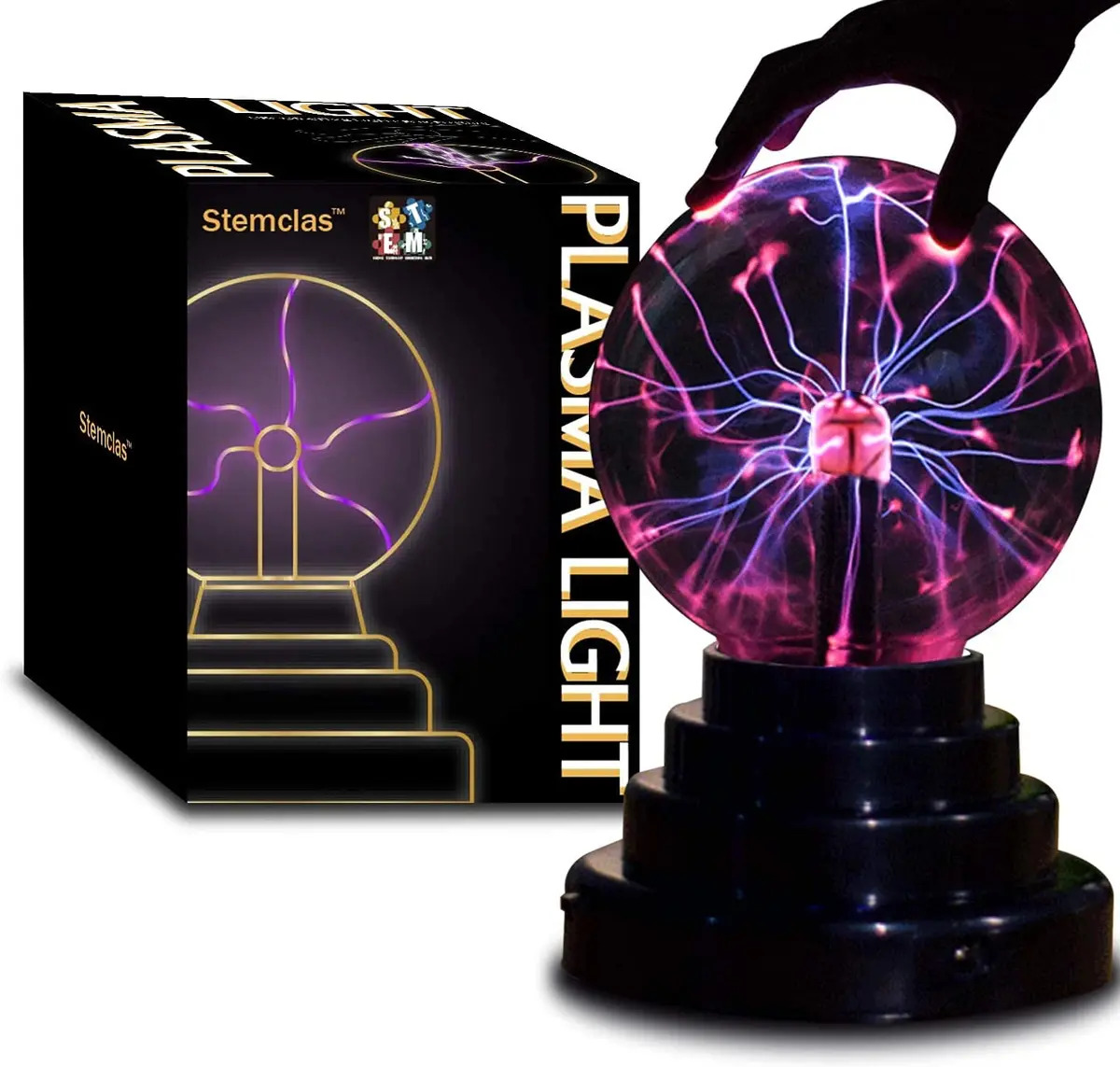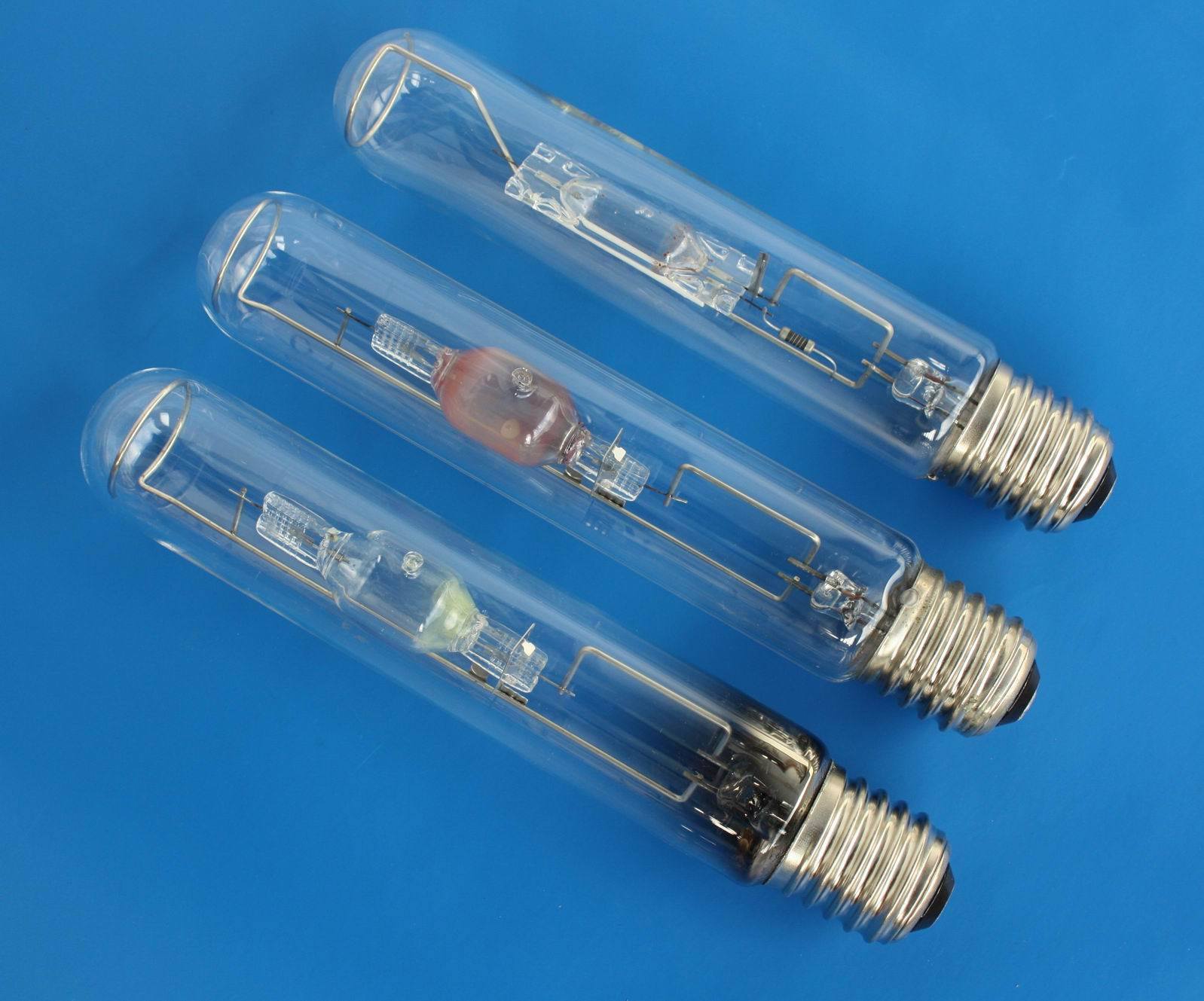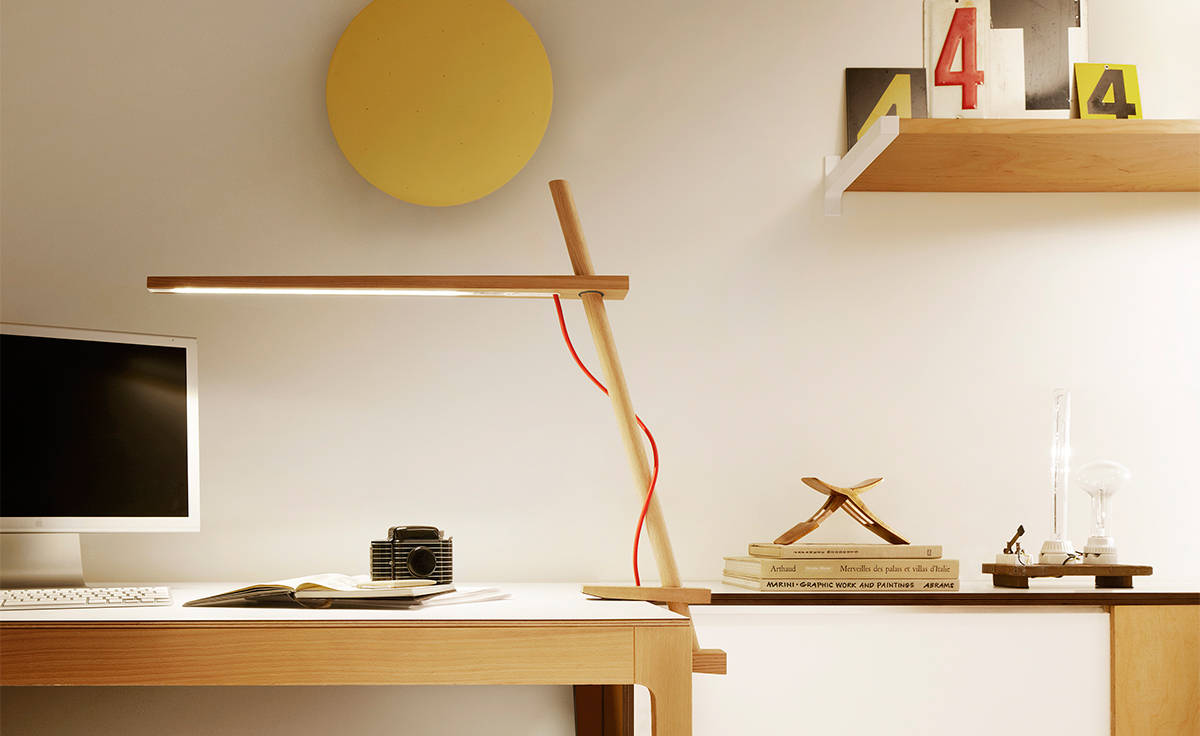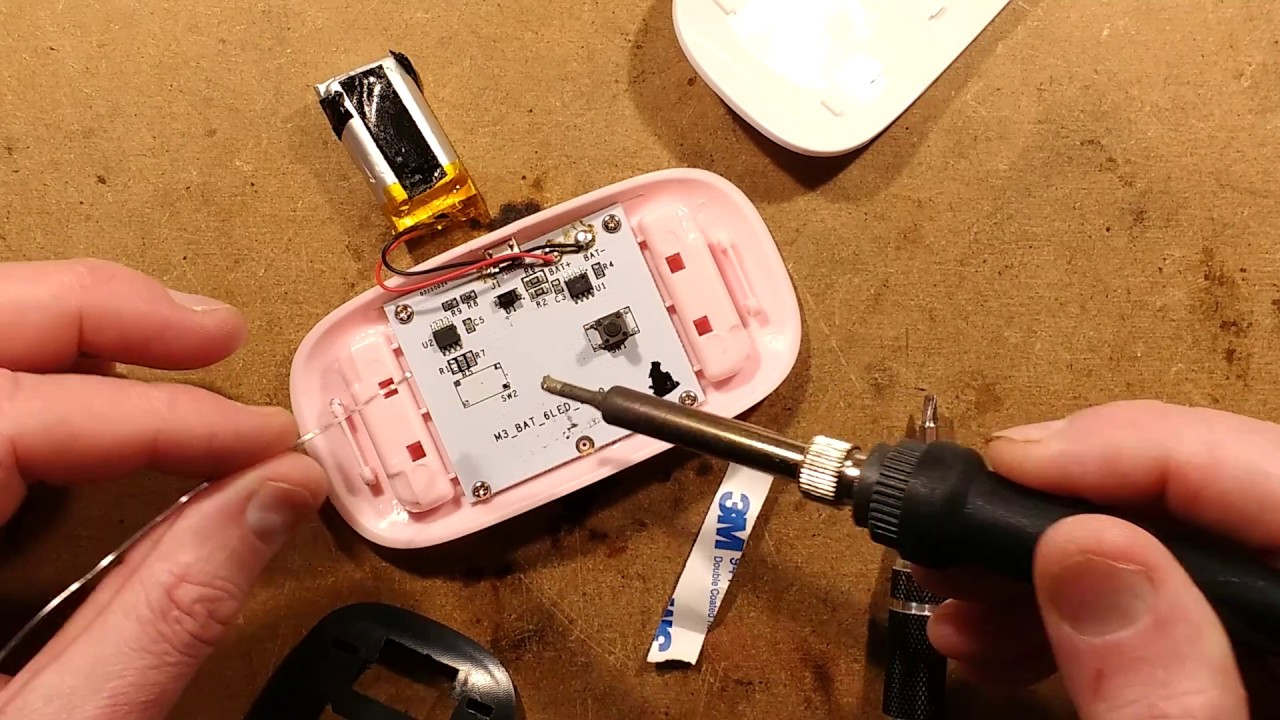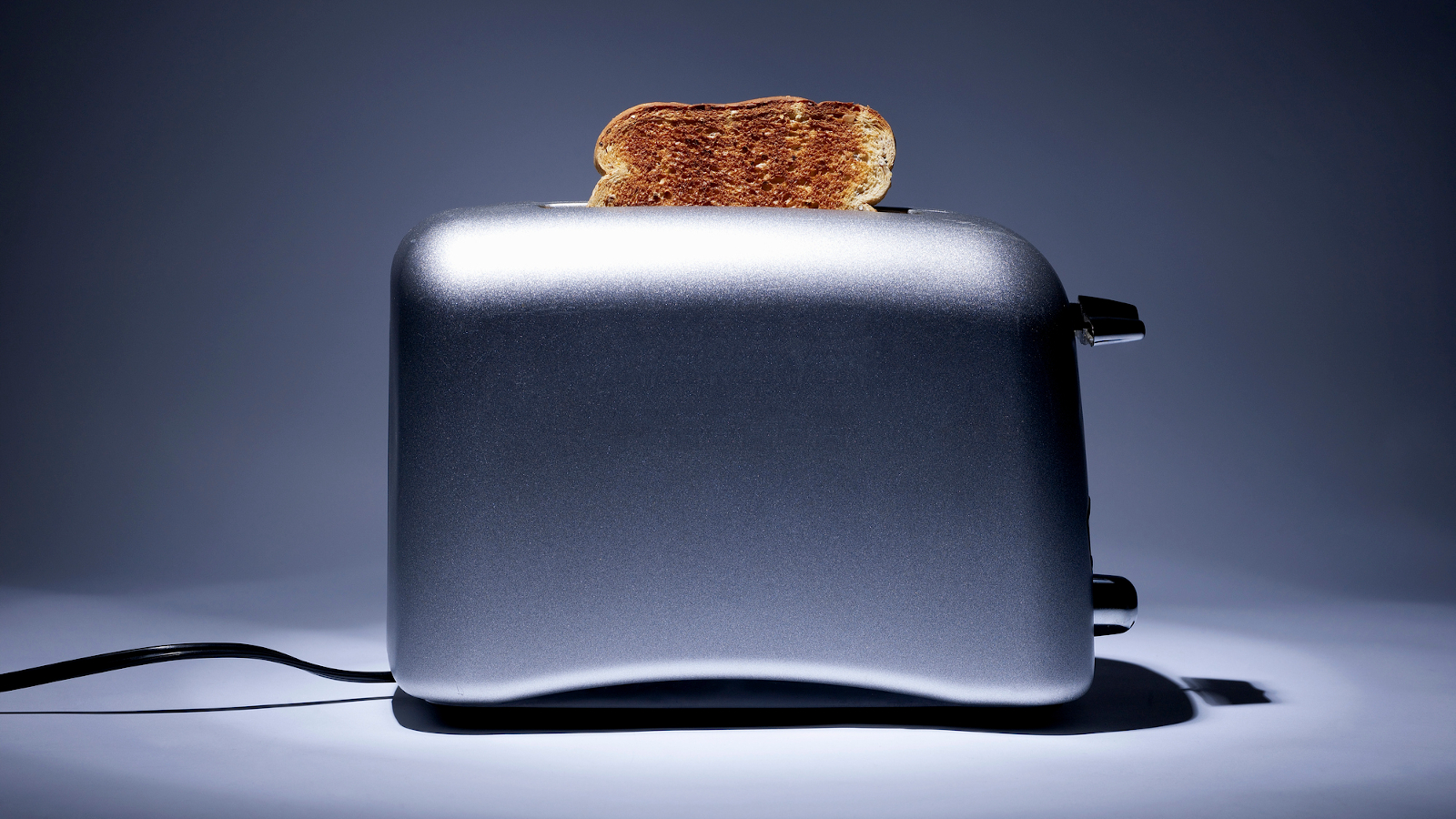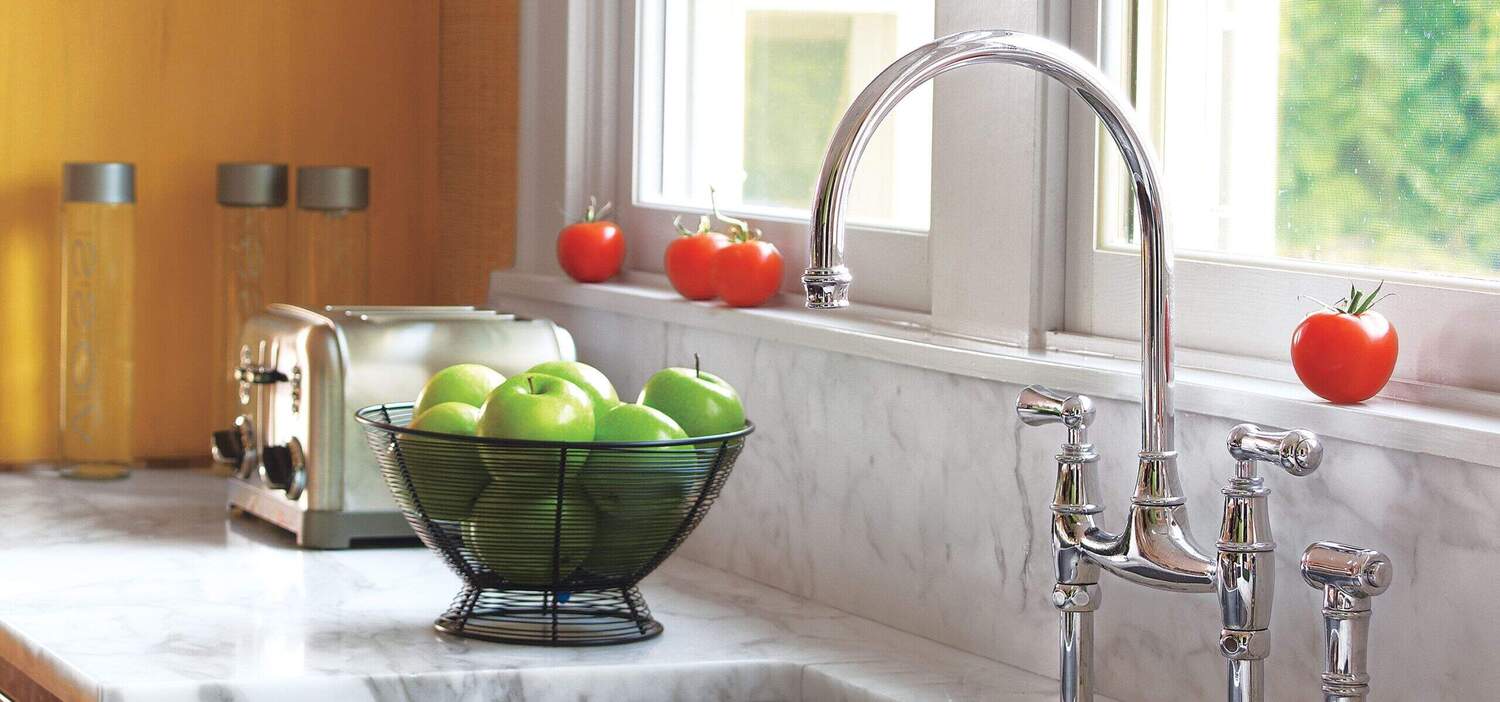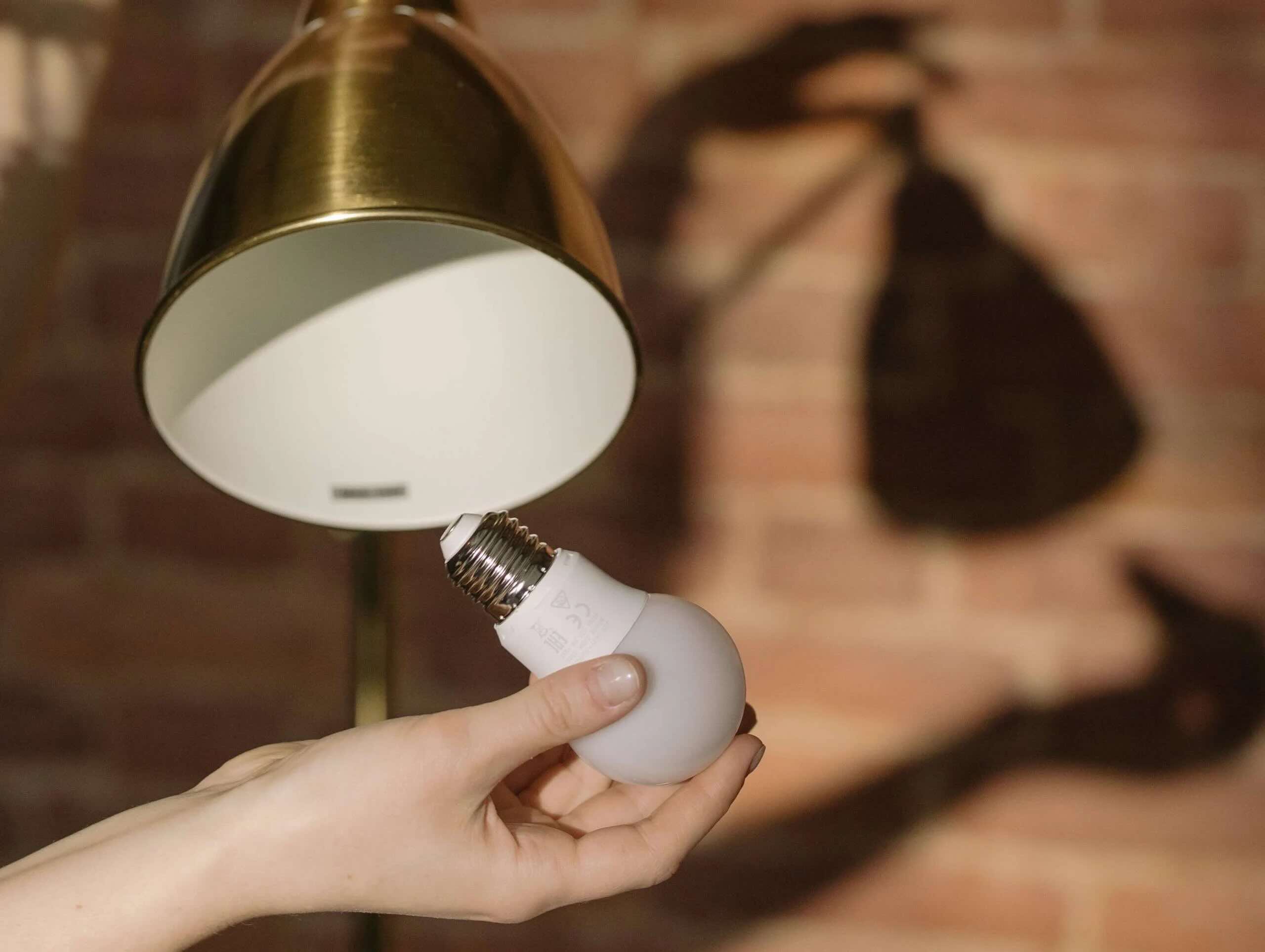

Furniture
How Does A Lamp Work
Modified: October 28, 2024
Discover the inner workings of a lamp and how it illuminates your space. Explore the intricate design and functionality of this essential furniture piece.
(Many of the links in this article redirect to a specific reviewed product. Your purchase of these products through affiliate links helps to generate commission for Storables.com, at no extra cost. Learn more)
Introduction
When it comes to home decor, one of the most essential elements is lighting. Lighting not only illuminates our living spaces, but it also adds warmth, ambiance, and brings a room to life. And at the heart of every lighting fixture lies a fascinating piece of furniture: the lamp.
In this article, we will take a closer look at how a lamp works and explore the various components that make up this essential piece of furniture. From the bulb to the base, the socket to the lampshade, we will delve into the intricate workings of a lamp and shed light on its functionality.
Whether you are a furniture enthusiast or simply curious about how things work, join us on this enlightening journey as we uncover the secrets behind the humble lamp.
Key Takeaways:
- Lamps are essential furniture pieces that bring light, style, and ambiance into our homes, with components like bulbs, bases, and lampshades working together to create beautiful illumination.
- Different types of lamps, such as table lamps, floor lamps, and desk lamps, offer unique functionality, style, and versatility, catering to various lighting needs and design preferences.
Read more: How Does A Touch Lamp Work
Components of a Lamp
A lamp consists of several key components that work together to create the perfect lighting experience. Let’s explore each of them in detail:
- The Bulb: The bulb is the heart of a lamp. It produces the light that fills a room. There are various types of bulbs available, including incandescent, fluorescent, and LED. Each type offers its own unique characteristics in terms of brightness, energy efficiency, and lifespan.
- The Base and Socket: The base of a lamp serves as its foundation and provides stability. It is typically made of materials such as metal, wood, or ceramic. The socket, located at the top of the base, holds the bulb securely in place and connects it to the lamp’s electrical system.
- The Lampshade: The lampshade is not only a decorative element but also serves a functional purpose. It diffuses the light emitted by the bulb, creating a softer and more ambient glow. Lampshades come in various shapes, sizes, and materials, allowing you to customize the look and feel of your lamp.
These three components form the foundation of a lamp, working together to create a beautiful and functional lighting fixture. But how exactly does a lamp work? Let’s find out in the next section.
The Bulb
The bulb is an essential component of a lamp as it is responsible for producing the illumination that brightens up a room. There are a variety of bulbs available in the market, each with its own characteristics and benefits.
One of the most common types of bulbs used in lamps is the incandescent bulb. It contains a filament made of tungsten that emits light when an electric current passes through it. Incandescent bulbs produce a warm, cozy glow and are available in different wattages to suit various lighting needs.
Another popular option is the fluorescent bulb, which is known for its energy efficiency. These bulbs use a combination of gases and a phosphor coating inside the tube to produce light. Fluorescent bulbs are long-lasting and emit a bright, cool light that is ideal for task lighting.
LED bulbs, or Light Emitting Diodes, have gained popularity in recent years due to their energy efficiency and long lifespan. LED technology allows for precise control of light output, making them highly versatile. LED bulbs come in various shades of white as well as a range of colors, allowing you to create different moods and atmospheres in your space.
When choosing a bulb for your lamp, consider factors such as the desired brightness, energy efficiency, and the ambiance you wish to create. It’s also important to check the maximum wattage recommended for your lamp to ensure compatibility with the bulb you choose.
In addition to the type of bulb, you may also want to explore different bulb shapes, such as traditional A-shaped bulbs, globe bulbs, or decorative bulbs, to add a touch of style to your lamp. With the right bulb, you can transform the lighting of your space and create a welcoming and inviting atmosphere.
Now that we understand the importance of the bulb, let’s move on to explore the other components of a lamp.
The Base and Socket
While the bulb is the source of light in a lamp, the base and socket play crucial roles in providing stability and connecting the bulb to the lamp’s electrical system.
The base of a lamp serves as its foundation, providing stability and support. It can be made from various materials such as metal, wood, ceramic, or even glass. The design of the base can range from simple and minimalist to ornate and decorative, allowing you to find a style that complements your overall home decor.
The socket, located at the top of the base, is where the bulb is inserted and secured in place. It is typically made of metal and contains a threaded screw-type mechanism that holds the bulb firmly. The socket also acts as the connector between the bulb and the lamp’s electrical system, allowing electricity to flow and illuminate the bulb when the lamp is turned on.
The socket may also include additional features such as a three-way switch or a dimmer switch, giving you control over the brightness level of the lamp. This allows you to adjust the lighting according to your needs and create different moods in your space.
When choosing a lamp, consider the stability and sturdiness of the base, especially if you have children or pets. Opt for a base that is wide and heavy enough to prevent tipping over. Additionally, ensure that the socket is compatible with the type of bulb you intend to use and that it is in good working condition.
The combination of a sturdy base and a reliable socket creates a secure and functional setup for your lamp. With the right base and socket, you can confidently enjoy the beautiful illumination provided by your chosen bulb.
Next, let’s explore the role of the lampshade in a lamp and how it enhances the lighting experience.
The Lampshade
When it comes to lamps, the lampshade serves both a practical and aesthetic purpose. It not only helps to diffuse and soften the light emitted by the bulb but also adds a decorative touch to the overall design of the lamp.
Lampshades come in a variety of shapes, sizes, and materials, allowing you to customize the look and feel of your lamp. Common materials used for lampshades include fabric, paper, glass, and metal. Each material has its own unique characteristics that can greatly affect the quality and ambiance of the light.
Fabric lampshades are a popular choice as they provide a cozy and warm glow. They can be made from various fabrics such as cotton, linen, silk, or synthetic materials. Depending on the fabric thickness and opacity, a fabric lampshade can gently filter the light, creating a soft and diffused illumination.
Paper lampshades are often used for their ability to create a soothing and atmospheric lighting effect. They are lightweight and allow light to pass through, creating a gentle and relaxing ambiance. Paper lampshades can come in various colors and patterns, adding a subtle decorative element to the lamp.
Glass and metal lampshades offer a more contemporary and sleek look. Glass shades can range from clear and transparent to frosted or colored, allowing you to control the intensity and direction of the light. Metal lampshades, on the other hand, can provide a more focused and direct illumination, making them suitable for task lighting.
When selecting a lampshade, consider the size and shape that best suits your lamp and the overall aesthetic of your space. A general guideline is to choose a lampshade that is approximately two-thirds the height of the base for a balanced and proportionate look.
Remember that while the lampshade adds style and character to your lamp, it also affects the quality of the lighting. Consider the level of transparency, opacity, and color of the lampshade to achieve the desired lighting effect in your room.
Now that we have explored the key components of a lamp, let’s move on to understand how a lamp actually works.
Read more: How Does A Carbide Lamp Work
How Does a Lamp Work?
Now that we’ve examined the key components of a lamp, let’s dive into how these components work together to create illumination.
At its core, a lamp operates by harnessing electricity to generate light. When you turn on a lamp, the electricity flows from the power source through the lamp’s electrical cord, making its way into the lamp’s socket.
Inside the socket, there is a metal contact that connects to the base of the bulb. This metal contact is in direct contact with the electrical circuit, allowing the current to flow into the bulb.
Once the electricity reaches the bulb, it passes through the filament (in the case of an incandescent bulb), which then heats up and emits light. In the case of LED or fluorescent bulbs, the electricity interacts with the gases inside the bulb to generate light.
It’s important to note that the lampshade plays a significant role in the lighting process. When the light is emitted from the bulb, it may be too harsh and intense for our eyes. The lampshade helps to diffuse the light and soften its glow. Depending on the material and design of the lampshade, it can scatter the light in different directions, creating a more pleasant and comfortable illumination.
Additionally, a lamp’s functionality is often enhanced by a switch mechanism. The switch allows you to control the flow of electricity, turning the lamp on or off as desired. Some lamps may also have additional switch options such as a three-way switch or a dimmer switch, giving you more control over the brightness level of the lamp.
Overall, the lamp’s circuitry, bulb, and lampshade work in harmony to create a well-lit and inviting space. The combination of these components allows you to enjoy the perfect balance of functional and aesthetic lighting in your home.
Now that we have a better understanding of how a lamp works, let’s explore the various types of lamps available on the market.
The Role of Electricity
Electricity plays a crucial role in powering lamps and enabling them to provide illumination. Without electricity, lamps would simply be decorative objects without the ability to shine light. Understanding the basics of electricity is essential to comprehend how lamps function.
Electricity is a form of energy that flows through conductors, such as wires, and powers various electrical devices. In the case of lamps, electricity is the driving force that enables the flow of current to the bulb, ultimately producing light.
In most residential and commercial settings, electricity is provided through an electrical grid, where power stations generate electricity and distribute it to consumers. The electricity is delivered to our homes and buildings through power lines and then enters our lamps through electrical outlets.
It’s important to note that electricity can be dangerous if mishandled. To ensure safety, lamps are designed with protective measures, such as insulated wires and grounding, to prevent electric shocks and other accidents.
When using a lamp, it’s essential to ensure that the electrical components, including the cord and plug, are in good condition. Regularly checking for frayed wires or damages and avoiding overloading electrical circuits can help maintain safety.
With the availability of electricity, lamps have become an integral part of our lives, providing both functional and aesthetic lighting solutions. Whether it’s brightening up a room, adding ambiance, or creating a cozy atmosphere, lamps rely on electricity to bring light into our spaces.
Now that we understand the role of electricity, let’s dive deeper into the circuitry of a lamp.
The Circuitry of a Lamp
Understanding the circuitry of a lamp is key to comprehending how electricity flows through the various components and powers the bulb. A lamp consists of a simple electrical circuit that allows the current to flow from the power source to the bulb.
The main components of the circuitry are the power cord, the switch, and the socket. The power cord connects the lamp to the electrical outlet, providing the pathway for electricity to enter the lamp. Inside the power cord, there are usually two or three wires: the live wire, the neutral wire, and sometimes the ground wire.
The switch, typically located on the lamp’s base or along the cord, acts as a control mechanism to turn the lamp on or off. When the switch is in the “on” position, it completes the circuit and allows electricity to flow to the bulb. When the switch is in the “off” position, it interrupts the flow of electricity and turns off the lamp.
The socket is an integral part of the circuitry as it connects the bulb to the electrical system. Inside the socket, there are metal contacts that touch the base of the bulb, allowing electricity to pass through. The socket also provides a secure and stable connection for the bulb.
As electricity flows through the circuit, it travels from the power source, through the power cord, and reaches the socket. Once in the socket, the electricity passes through the metal contacts and enters the bulb. This completion of the circuit enables the bulb to emit light.
It’s important to note that lamps are designed with safety mechanisms in the circuitry. For example, the insulation around the wires of the power cord prevents electrical shocks and protects users. Additionally, the grounding wire, if present, provides an additional safety measure by redirecting any excess electrical charge to the ground.
The circuitry of a lamp is relatively simple, but it is vital to ensure that all components are in good working condition to maintain safety and functionality. Regular inspections, such as checking for loose connections or damaged wires, can help identify potential issues and ensure reliable performance.
Now that we understand the circuitry of a lamp, let’s explore the role of the switch in controlling the lighting.
When a lamp is turned on, electricity flows through the bulb’s filament, heating it up and causing it to emit light. The light is then diffused and directed by the lampshade, creating a warm and inviting glow.
The Function of the Switch
The switch is a vital component of a lamp as it controls the flow of electricity, allowing you to turn the lamp on and off. It serves both a practical and functional purpose, providing convenience and control over the lighting in your space.
Located on the lamp’s base or along the cord, the switch is designed to complete or break the electrical circuit. When the switch is in the “on” position, it connects the live wire to the socket, allowing electricity to flow from the power source to the bulb. This completes the circuit and activates the lamp, resulting in the bulb emitting light.
Conversely, when you flip the switch to the “off” position, it breaks the circuit and interrupts the flow of electricity. This turns off the lamp, causing the bulb to stop emitting light. The switch acts as a control mechanism that allows you to easily and conveniently control the lighting in a room.
Depending on the type of lamp, the switch may have additional functions. For instance, some lamps feature a three-way switch that offers multiple lighting options. This allows you to choose between different levels of brightness or utilize different bulbs, providing versatility to meet your specific lighting needs.
Dimmer switches are another popular feature in lamps. Dimmer switches offer a range of brightness options by adjusting the electrical current flowing to the bulb. This enables you to create various moods and ambiance in your space, whether you prefer bright task lighting or a soft, intimate glow.
The design and placement of the switch can vary depending on the lamp style and model. Some switches may be conveniently positioned on the lamp’s base, allowing for easy access and operation. Others may have a toggle switch, a push-button switch, or a rotary switch, each offering its unique user experience.
When choosing a lamp, consider the switch’s functionality and placement. Ensure that it is easy to reach and operate, especially if you plan to use the lamp frequently. Additionally, select a switch that matches your personal preference and aesthetic taste.
The switch is a simple yet crucial component of a lamp that puts you in control of the lighting in your space. Its functionality allows you to instantly brighten or dim a room, creating a comfortable and inviting atmosphere.
Now that we understand the function of the switch, let’s explore the process of lighting a lamp and how it brings illumination to your space.
Read more: How Does An Oil Lamp Work
The Process of Lighting a Lamp
Lighting a lamp is a simple and straightforward process that brings illumination to your space. By following a few steps, you can enjoy the warm and comforting glow provided by your lamp.
Here is a step-by-step guide to lighting a lamp:
- Ensure that the lamp is plugged into a functional electrical outlet. Check that the power cord is securely connected and in good condition.
- Inspect the lamp’s bulb to ensure that it is properly inserted into the socket. If the bulb is burned out or damaged, replace it with a new one of the appropriate wattage and type.
- Locate the lamp’s switch, which may be on the lamp’s base or along the cord. If the lamp has a three-way switch or dimmer switch, set it to the desired brightness level.
- Flip the switch to the “on” position. This completes the electrical circuit, allowing electricity to flow from the power source to the bulb.
- Observe as the bulb gradually illuminates, emitting a warm and inviting glow. The lampshade helps to diffuse and soften the light, creating a pleasant ambiance.
- To turn off the lamp, simply flip the switch to the “off” position. This breaks the electrical circuit, stopping the flow of electricity and turning off the bulb.
- When not in use, it’s a good practice to unplug the lamp from the electrical outlet, ensuring safety and conserving energy.
Lighting a lamp is a quick and effortless process that instantly adds illumination to a room. Whether you’re looking to create a cozy reading nook, set a relaxing mood, or simply brighten up a space, a well-lit lamp can help create the perfect ambiance.
Remember to handle the lamp and its components with care, especially when dealing with bulbs that may generate heat. Always allow the bulb to cool down before replacing it or performing any maintenance.
Now that we’ve explored the process of lighting a lamp, let’s delve into the different types of lamps available on the market today.
Types of Lamps
Lamps come in a variety of styles and designs, each serving a specific purpose and adding a unique touch to your home decor. Let’s explore some of the most common types of lamps:
- Table Lamps: Table lamps are versatile and popular choices for adding task lighting and ambiance to any room. They are typically placed on bedside tables, desks, or side tables. Table lamps come in various sizes, shapes, and styles, allowing you to find the perfect piece that complements your existing furniture and decor.
- Floor Lamps: Floor lamps are freestanding lamps that provide ambient lighting and can also serve as statement pieces in a room. They are excellent choices for illuminating large spaces or providing additional light in corners. Floor lamps come in different heights, styles, and designs, making them versatile additions to any interior space.
- Desk Lamps: As the name suggests, desk lamps are designed specifically for task lighting on desks or workstations. They are typically adjustable and provide focused lighting for reading, writing, or working on detailed tasks. Desk lamps often have flexible necks or adjustable arms for easy positioning and directing light where it’s needed most.
- Accent Lamps: Accent lamps are smaller lamps that are used to enhance the aesthetic appeal and create a focal point in a room. They often feature unique designs, such as stained glass, ceramic, or artistic bases, and are commonly used on side tables, shelves, or mantels to add a decorative touch to the space.
- Task Lamps: Task lamps are designed specifically for focused lighting and are typically used for specific activities such as reading, crafting, or studying. These lamps provide bright, direct light to ensure optimal visibility and reduce eye strain during detailed tasks.
- Bedside Lamps: Bedside lamps are specifically designed for use on nightstands or bedside tables and are intended to provide soft and soothing lighting to promote relaxation and create a peaceful atmosphere in the bedroom. They are often paired with a fabric or paper lampshade to create a warm and cozy glow.
- Swing Arm Lamps: Swing arm lamps feature an adjustable arm that can be easily moved and positioned to direct light wherever it’s needed. They are commonly used for reading or as task lighting in areas where adjustability and flexibility are crucial.
These are just a few examples of the many types of lamps available on the market. When choosing a lamp, consider the purpose, functionality, and aesthetics that align with your specific needs and personal style.
Now that we’ve explored different types of lamps, let’s conclude our journey into the fascinating world of lighting furniture.
Table Lamps
Table lamps are versatile lighting fixtures that can enhance the functionality and ambiance of any room. They are designed to be placed on tables, such as bedside tables, desks, or side tables, to provide task lighting and create a warm and inviting atmosphere.
One of the key advantages of table lamps is their versatility in terms of design, size, and style. They come in a wide range of shapes, sizes, and materials, allowing you to find the perfect table lamp that suits your personal taste and complements your existing furniture and decor.
Table lamps serve multiple purposes. They provide focused lighting for tasks such as reading, writing, or working on a computer. Placed on bedside tables, they offer convenient illumination for nighttime reading or providing a gentle glow for a comfortable sleep environment.
In addition to their functional benefits, table lamps are often used as decorative accents. Their variety of designs and lampshade options allow them to add style and flair to a room. Whether you prefer a sleek and modern design, a classic and traditional look, or a whimsical and artistic touch, there’s a table lamp to suit every aesthetic.
Table lamps are also versatile because they can be easily moved and repositioned. Unlike fixed lighting fixtures, such as chandeliers or wall sconces, table lamps offer flexibility and can be placed wherever there is a table or surface. This allows you to experiment with different lighting arrangements and create specific focal points in your space.
When selecting a table lamp, consider the size and height in comparison to the table or surface it will be placed on. The lampshade should be proportional to the base, and the lamp’s height should be appropriate for its intended use. A general guideline is to ensure that the bottom of the lampshade is at eye level when you are seated next to the table lamp.
Table lamps often feature switches conveniently located on their bases or cords, allowing for easy operation and control of the lighting. Some table lamps also offer additional features such as dimmer switches or adjustable lamp arms, providing further customization and flexibility in lighting options.
Whether you need a table lamp to illuminate your workspace, add a touch of style to your bedside table, or create a cozy reading nook, there is a table lamp to suit every need and personal preference. With their functionality, versatility, and aesthetic appeal, table lamps continue to be a popular choice in lighting design.
As we conclude our exploration of table lamps, we hope you have gained a deeper appreciation for the role they play in enhancing both the functionality and aesthetics of your living spaces.
Floor Lamps
Floor lamps are versatile and stylish lighting fixtures that can transform the ambiance of any room. As freestanding lamps, they provide both functional and decorative lighting solutions. Floor lamps are designed to be placed on the floor, typically next to seating areas or in corners, to provide ambient or task lighting.
One of the main advantages of floor lamps is their ability to illuminate larger spaces. Unlike table lamps or desk lamps, floor lamps can provide lighting for a broader area, making them ideal for open-concept living rooms, grand entrances, or other large rooms where overhead lighting is not sufficient. By directing light upwards or downwards, floor lamps create a warm and inviting glow that fills the space.
Floor lamps come in a wide variety of designs, sizes, and styles, making it easy to find one that matches your aesthetic preferences and complements your existing decor. From sleek and modern designs to traditional or rustic styles, there’s a floor lamp to suit every taste.
Aside from providing general lighting, floor lamps can also serve as decorative accents. They can act as statement pieces, adding character and visual interest to a room. Many floor lamps feature unique bases, such as sculptural or architectural designs, that become focal points within the space.
Task lighting is another function that floor lamps can fulfill. With adjustable heads or arms, certain floor lamps provide focused lighting for specific activities such as reading, crafting, or working on a laptop. This flexibility allows you to direct the light exactly where you need it, creating a comfortable and efficient working environment.
Positioning a floor lamp strategically can help enhance the overall lighting scheme of a room. Placing a floor lamp near a seating area can create a cozy and intimate ambiance, perfect for relaxing and unwinding. On the other hand, positioning a floor lamp in a dark corner can help brighten up the space and eliminate shadows.
Like other lamps, floor lamps often feature switches conveniently located on their bases, cords, or even foot pedals. Some floor lamps may also offer additional features such as dimmer switches, allowing you to adjust the brightness and create the desired mood in your room.
When selecting a floor lamp, consider the height, style, and stability. The lamp’s height should be proportional to the surrounding furniture and ceiling height. Additionally, make sure the base is stable and won’t tip over easily, especially if you have children or pets in the house.
Whether you need to brighten up a living room, create a reading nook, or add a touch of elegance to a corner, a well-chosen floor lamp can elevate the style and functionality of your space. Its versatility and design options make it a popular lighting choice among homeowners and designers alike.
As we conclude our exploration of floor lamps, we hope you have gained a deeper appreciation for the role they play in enhancing both the lighting and aesthetics of your living spaces.
Read more: How Does A Homemade Lava Lamp Work?
Desk Lamps
Desk lamps are essential lighting fixtures that provide focused illumination for various tasks and activities. Designed specifically for desks, workstations, or study areas, desk lamps offer functionality and flexibility to enhance productivity and create a well-lit workspace.
One of the main advantages of desk lamps is their ability to provide task lighting. Whether you’re reading, writing, studying, or working on a computer, a desk lamp offers focused lighting that reduces eye strain and enhances visibility. The directed light ensures that you have ample illumination precisely where you need it, allowing you to work efficiently and comfortably for extended periods.
Desk lamps come in a variety of sizes and styles to suit different desk setups and personal preferences. Whether you prefer a sleek and modern design, a classic banker’s lamp, or a more decorative and ornate style, there’s a desk lamp to match your taste and complement your workspace.
Flexibility is a key feature of desk lamps. Many desk lamps are adjustable, allowing you to direct the light at different angles and positions. This adjustability ensures that the light can be precisely directed to illuminate your workspace, documents, or computer screen without causing glare or shadows.
In addition to adjustability, desk lamps often have other convenient features. Some may have built-in USB ports for charging devices, while others have dimming options that allow you to customize the brightness level to your preference. These features enhance the functionality and versatility of your desk lamp, making it even more suitable for your specific needs.
When choosing a desk lamp, consider the size and height that works best for your desk configuration. The lamp’s height should allow the light to shine directly on your work surface without obstructing your view or casting shadows. The style and design of the lamp should also fit harmoniously with your overall office décor.
Desk lamps typically feature switches located on the lamp base or along the cord, allowing for easy and convenient operation. Some models even offer touch controls, eliminating the need for physical switches.
Besides providing functional lighting, desk lamps can also contribute to the aesthetics of your workspace. The right desk lamp can add a touch of style and sophistication to your desk, enhancing the overall look and feel of your office environment.
Ultimately, desk lamps are indispensable tools for optimal workspace lighting. Their focused and adjustable illumination ensures that you can work comfortably, efficiently, and with reduced eye strain. With their combination of functionality and style, desk lamps are a must-have for any productive and well-designed workspace.
As we conclude our exploration of desk lamps, we hope you have gained a deeper appreciation for how these versatile lighting fixtures enhance the functionality and aesthetics of your work environment.
Conclusion
In the world of home decor, lighting plays a crucial role in creating the right atmosphere and enhancing the aesthetics of a space. Lamps, with their functionality and beauty, are essential furniture pieces that bring light and style into our homes.
We have explored the various components that make up a lamp, including the bulb, base and socket, and lampshade. Each of these components serves a specific purpose in creating a well-lit and visually appealing lighting fixture.
Understanding how a lamp works, from the flow of electricity to the circuitry and the role of the switch, has given us insight into the inner workings of these fascinating pieces of furniture.
We’ve also explored different types of lamps, such as table lamps, floor lamps, and desk lamps. Each type offers its unique functionality, style, and versatility, catering to different lighting needs and design preferences.
Whether you are looking to create a cozy reading nook with a table lamp, brighten up a room with a floor lamp, or establish a productive workspace with a desk lamp, there is a lamp to suit every space and lifestyle.
Throughout our exploration, we’ve come to appreciate the integral role that lamps play in lighting up our lives. From their practicality and functionality to their ability to enhance the ambiance and aesthetics of a room, lamps have proven to be indispensable pieces of furniture.
As you select and incorporate lamps into your home, consider the design, size, and style that best align with your personal taste and decor. Remember to balance both form and function to create a harmonious and well-lit space.
From the bulb to the base, the socket to the lampshade, each component comes together to create a beautiful illumination that enhances our living spaces. So, the next time you turn on a lamp and bask in its warm glow, take a moment to appreciate the artistry, engineering, and magic that goes into these timeless pieces of furniture.
Illuminate your home. Embrace the beauty of lamps.
Frequently Asked Questions about How Does A Lamp Work
Was this page helpful?
At Storables.com, we guarantee accurate and reliable information. Our content, validated by Expert Board Contributors, is crafted following stringent Editorial Policies. We're committed to providing you with well-researched, expert-backed insights for all your informational needs.
